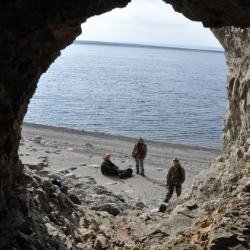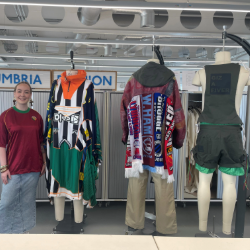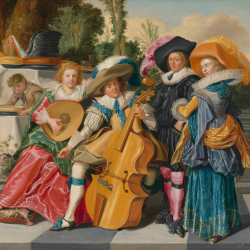Performing arts course options also range from being broad with titles like Performing arts. When you study a performing arts degree at university, you’ll explore a range of contemporary arts disciplines. Most performing arts course options give you the opportunity to pursue several disciplines or specialise in one. Giving you the flexibility to develop your art as you get to grips with the realities and practicalities of production.
If you know that there’s a specific element of performing arts that you want to pursue, then you’ll find opportunities for more targeted degree subjects. Degree titles like Performing Arts (Film, Tv and Stage), Musical Theatre, Commercial Dance for Stage and Screen, Acting (Screen & Digital Media), Music Performance and Industry are common.
Design course options
Design course options are split in a similar way, there are general design degrees, usually Design BA or Design BSc; these broad degrees might focus on the general principles of design, core elements of design practice like prototyping and model making. The aim of these degrees is to gradually develop your own individual specialist design focus.
If you want to study design at university and know the area you’d like to pursue, then you may want to consider more niche design degrees to develop your skills on a deeper level. Specialist degree subjects might include Graphic Design, Product Design, Fashion Design, Video Game design, Web Design or User Experience Design.
Discover Arts and Design course options at Northumbria University.
Conservatories
If you choose to study for a specialist performing arts degree like music, dance or drama you may want to consider looking at conservatories as well as universities for your degree programme. A conservatoire education focuses very much on practical learning and performance, whereas a university education tends to be more academic.
Placements and study abroad
Like any degree there’s a lot of value in gaining practical experience to support what you’re learning as part of your degree. This is especially so when you study arts at university. Whether you’re beginning your study with an undergraduate degree or developing your knowledge with a Master’s degree in arts you’ll benefit from taking interest in some form of placement or work experience.
Because the job market for graduates in the arts is so competitive it’s your experience that will set you apart. Many degrees offer placement options as part of their arts course options. If you study performing arts this might involve work experience at a theatre, arts organisation, or cultural industry. When you study design, you may want to pursue placement opportunities in industry. Those who study fine art could look for work experience and placements in art galleries or arts organisations. Be sure to look at the networks and links that your chosen university has with your areas of interest as these will inform the types of experience that will be available to you.
Studying abroad is an excellent opportunity if you choose to study an arts degree at university. Whether you study fine art, study performing arts or design your practice is culturally influenced. Exposure to different cultures, languages, and climates as well as audiences and users with different expectations, will make you a more well-rounded and experienced practitioner.
What career prospects does Art and Design offer?
There’s a cliche; ‘choose a job you love, and you will never have to work a day in your life.’ A career in the arts can really speak to that. It’s a challenging field, and competitive but those who work hard with passion and dedication to their craft can find rewarding careers.
Graduates with an art and design degree can go on to work in a wide range of industries including advertising, architecture, fashion, film, gaming, graphic design, interior design, graphic design, product development, web design, entertainment, journalism, marketing, photography, publishing, web design, and much more.
Many art and design graduates also make their living on a freelance or self-employed basis, giving you the freedom to choose your hours and projects.
What jobs can I do with an Art and Design degree?
Because the subject offers such broad skills development the graduate destinations of art and design graduates is vast. Within creative industries popular career paths include:
- Actor
- Musician
- Set design
- Voice actor
- Animator
- Costume or fashion designer
- Fine artist
- Print maker
- Graphic designer
- Ceramic artist
- Illustrator
- Photographer
- Textile designer
- Spatial designer
Many arts graduates find themselves pursuing careers outside of the creative arts sector. Popular career paths outside of creative industries include:
- Advertising executive
- Art gallery curator
- Arts administrator
- Cad technician
- Design and development manager
- Marketing executive
- Events management
- Sales executive
Why choose Northumbria University for Art and Design?
The Department of Arts at Northumbria University is one of the largest in the UK for studying arts, performance, culture, and cultural history. The Northumbria School of Design specialises in Industrial, Fashion, Communication, and Innovation Design. Together, they make Northumbria University an impressive place to study Art and Design.
When you study arts at Northumbria, whether that’s performing arts, design, fine art or other disciplines you’ll benefit from a creative community of performers, artists, scholars, and educators, and you’ll also learn from internationally recognised visiting artists, performers, academics, researchers, directors, designers, actors, choreographers, and musicians.
Facilities
Northumbria University makes sure you have all the resources you need to realise your creative potential, as well as access to study spaces, libraries, and online learning resources, you’ll also access industry specific facilities.
When you choose to study Fine Art at Northumbria your learning environment is centred on the studio and workshops. Northumbria supports a range of approaches to making, be that painting, sculpture, print, digital print, dark room photography, moving image, paper making, sound or performance. The studios are complemented by a generous access to project spaces in which you can test your ideas and host your own exhibitions, events, and workshops.
When you study Design at Northumbria University you’ll be based in the Northumbria School of Design. You’ll have access to industry-standard studios and workshops including large well-equipped timber and metal workshops, specialist CAD laboratory, CNC machinery and 3d printing as well as several mobile laboratories that deliver IT facilities for creative working.






.png?modified=20250630105204)




